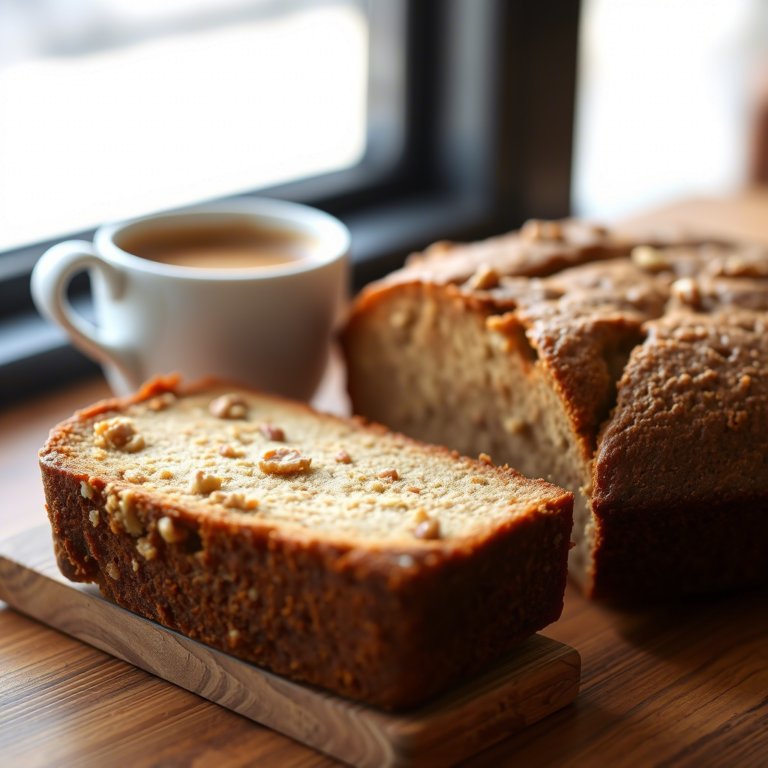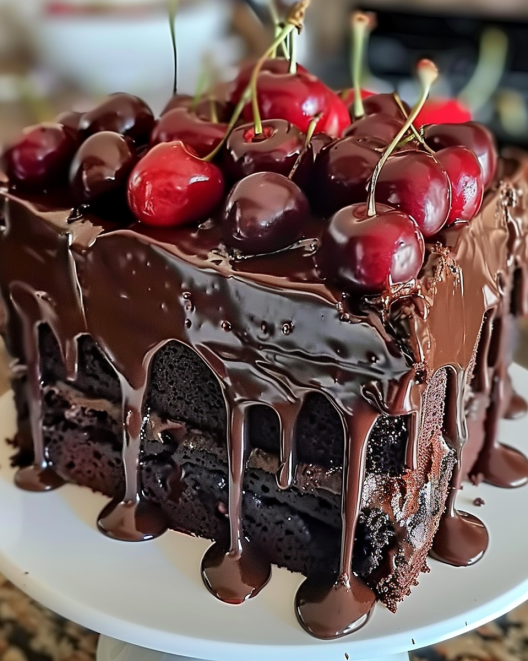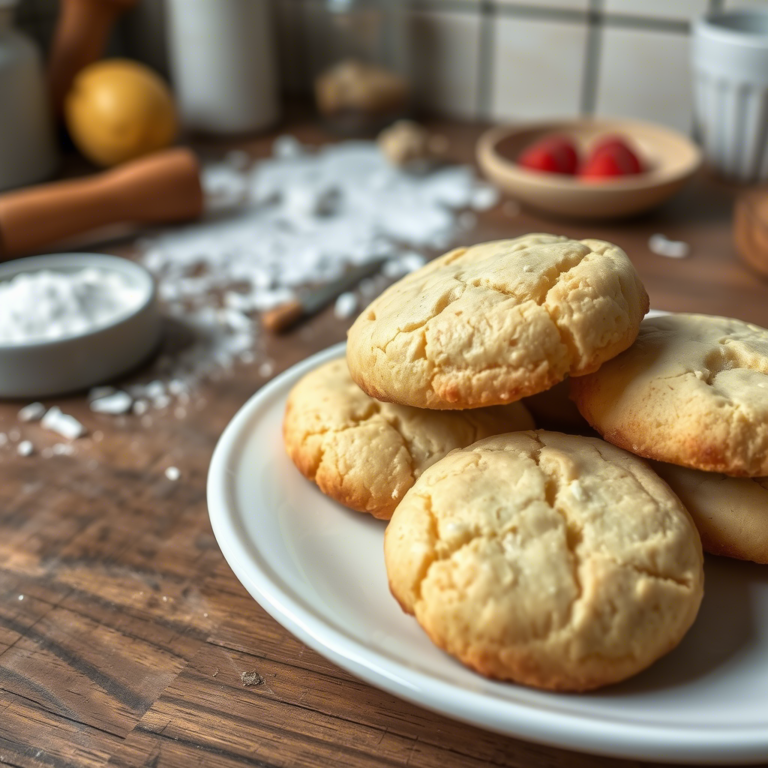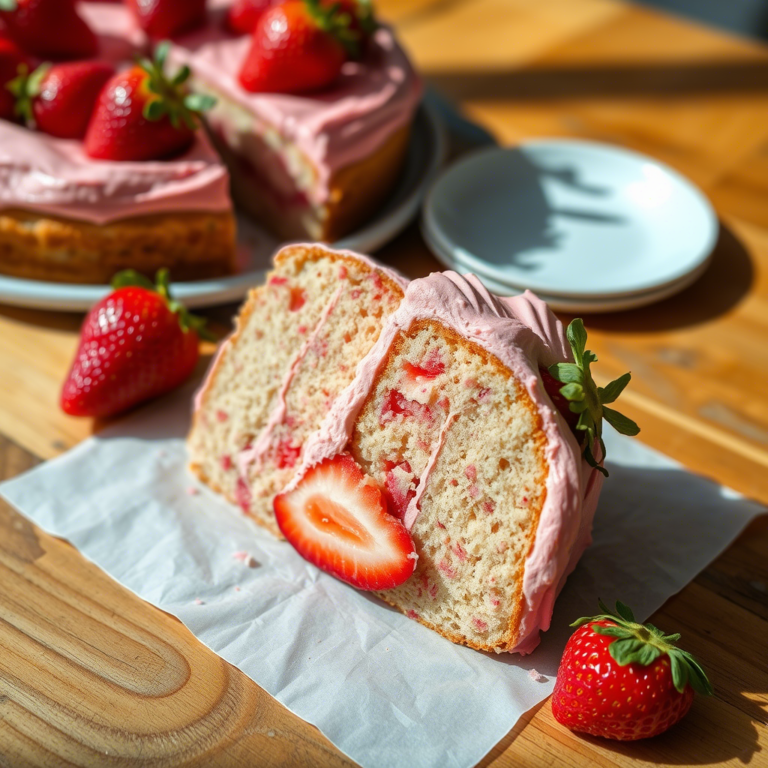Apple Pie Recipe: Perfect Crust, Filling & Tips
Apple Pie: A Classic Dessert Loved by Many
Apple pie—just the thought of it conjures up warm, nostalgic memories. The crisp, buttery crust, the tender spiced apples, and the heavenly aroma that fills the kitchen—it’s no wonder this dessert is a staple in many households. But have you ever wondered where apple pie came from, how to perfect the crust, or which apples work best for baking? This article dives deep into the history, ingredients, techniques, and tips to help you craft the perfect homemade apple pie.
Introduction
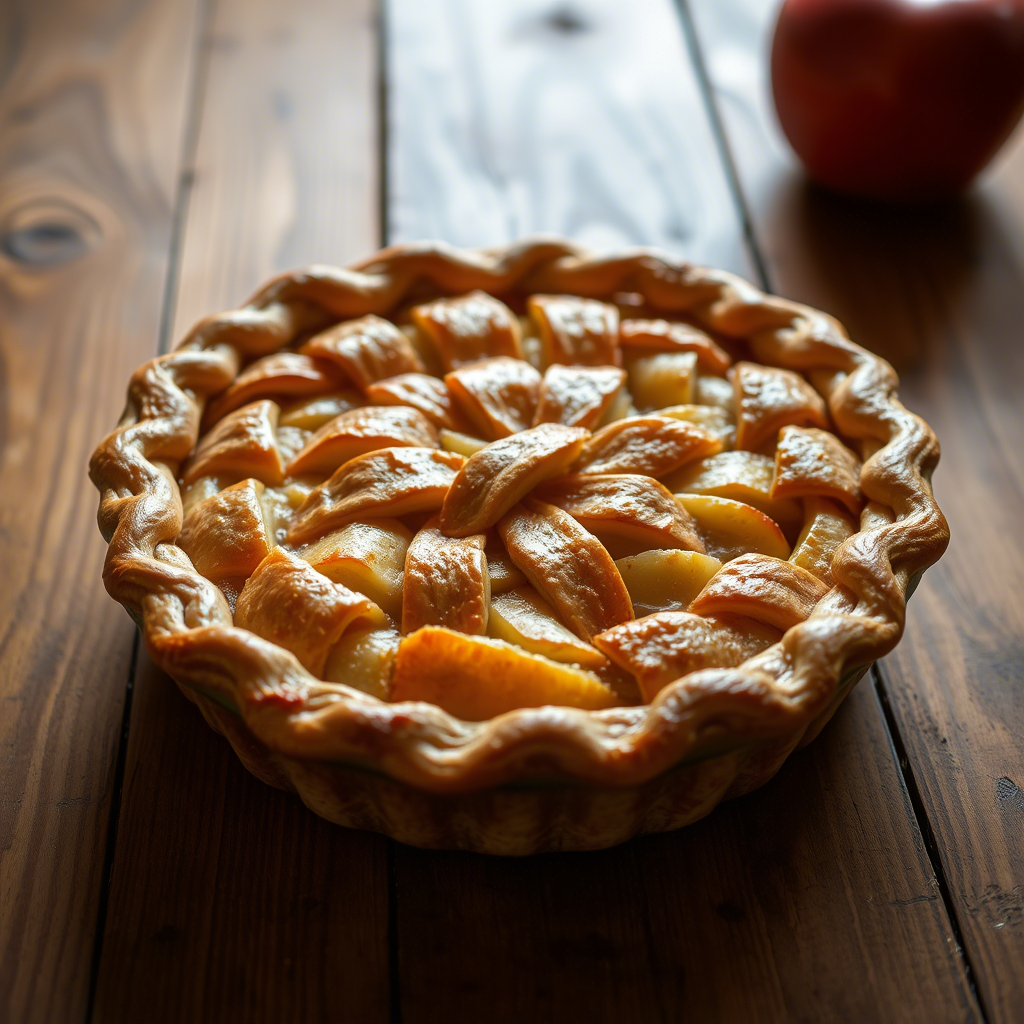
Few desserts hold the same iconic status as apple pie. It’s often associated with comfort, tradition, and home-baked goodness. Whether served warm with a scoop of vanilla ice cream or with a sharp slice of cheddar cheese, this beloved dessert has stood the test of time.
But what makes the best apple pie? Is it the flaky, golden-brown crust? The perfect balance of sweetness and spice in the filling? Or perhaps, the type of apples used? Whatever the secret, one thing’s for sure—getting it just right takes a mix of the right ingredients, baking techniques, and a bit of patience.
In this guide, we’ll explore everything you need to know about crafting a delicious homemade apple pie—from its rich history to choosing the best apples and mastering the perfect crust. So, let’s roll up our sleeves and get baking!
The History and Cultural Significance of Apple Pie
Apple pie might be synonymous with American culture, but did you know it didn’t actually originate in the U.S.? The roots of apple pie trace back centuries, with influences from Europe, particularly England, France, and the Netherlands.
Ancient Beginnings
The earliest recorded apple pie recipes date back to the 14th century in England. These medieval pies, known as “pyes,” were made with a pastry crust, apples, figs, raisins, and pears. However, unlike today’s pies, the crust was more of a container rather than an edible component.
Dutch and French Influences
In the 15th and 16th centuries, Dutch bakers perfected deep-dish apple pies topped with a crumbly streusel, while the French introduced tarte Tatin, an upside-down caramelized apple tart that added a new layer of indulgence to the dessert.
Apple Pie in America
By the 17th century, English colonists brought apple pie recipes to the New World. However, apples weren’t native to North America, so they planted orchards, leading to the widespread cultivation of apples. Over time, American bakers refined the recipe, using ingredients like cinnamon, nutmeg, and butter to create the rich flavors we love today.
The phrase “as American as apple pie” became popular in the 20th century, symbolizing national pride, family values, and homemade goodness. The dessert was even used in World War II propaganda to boost morale.
Apple Pie Today
Now, apple pie is enjoyed worldwide with countless variations, from the classic double-crust pie to caramel apple pie and even deep-fried versions. No matter how it’s made, one thing is certain—this timeless dessert continues to bring joy to generations.
Up next, we’ll explore the essential ingredients that make a perfect apple pie. 🍏🥧
Types of Apple Pie
There are countless ways to enjoy apple pie, each offering a unique twist on the classic dessert. From the traditional double-crust version to variations like Dutch and French-inspired pies, let’s explore the different styles of apple pie that will have your taste buds dancing.
Traditional Double-Crust Apple Pie
The double-crust apple pie is the epitome of comfort. It’s the one most people think of when they hear the words “apple pie.” With a golden, flaky crust encasing a spiced apple filling, it’s a true classic. The bottom crust holds the tender, cinnamon-sugar-coated apples, while the top crust provides that satisfying crunch. Some bakers opt for a lattice crust, weaving strips of dough to create a beautiful pattern that allows the filling to peek through.
This version is all about balance—the sweetness of the apples mingling perfectly with the warm spices and the buttery, crisp crust. It’s simple, but oh so good.
Dutch Apple Pie
If you prefer a pie with a little more texture, the Dutch apple pie might be your new favorite. Instead of the traditional top crust, Dutch pies are topped with a streusel— a buttery, crumbly mixture made from flour, sugar, and butter. This adds a sweet and slightly crunchy contrast to the soft, spiced apples inside. The streusel topping also caramelizes during baking, giving the pie an irresistible golden finish.
Dutch apple pie often feels a bit more indulgent, as the streusel provides extra richness, making each bite a delightful explosion of flavor.
French Tarte Tatin
For a completely different experience, the French tarte tatin is an upside-down apple pie that’s as elegant as it is delicious. Instead of baking the apples inside a crust, they are caramelized first, then topped with dough and baked. Once out of the oven, the pie is flipped over, revealing a glistening, golden-brown topping.
This caramelized version of apple pie adds a whole new dimension to the flavor. The sweetness of the apples is enhanced by the rich, buttery caramel, making every bite an absolute treat for the senses.
Choosing the Best Apples for Apple Pie
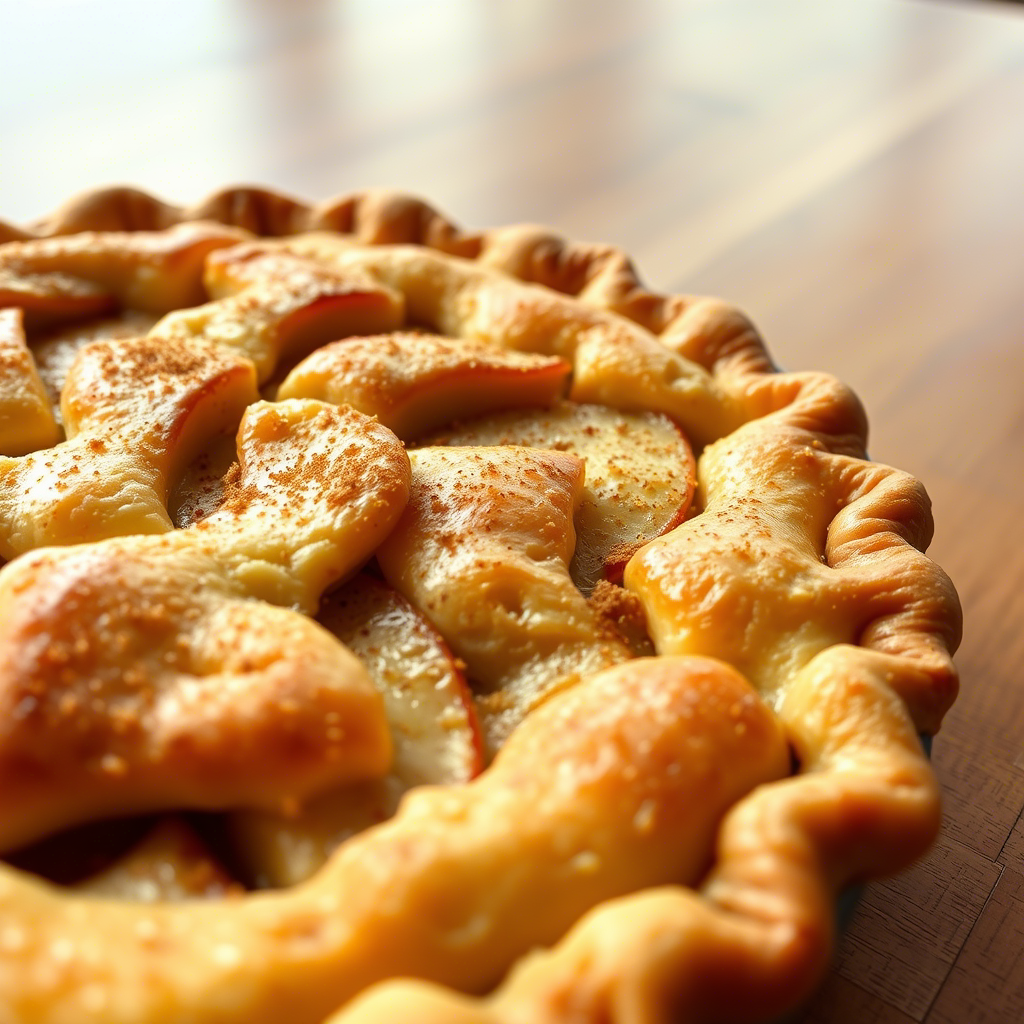
The type of apples you use in your apple pie can make or break the flavor and texture. When it comes to baking, not all apples are created equal. Some apples hold their shape and offer a balance of sweet and tart, while others may turn mushy or too sweet when baked. Let’s take a deep dive into choosing the right apples to ensure your pie is a success.
The Perfect Apple Pie Apples
The best apples for apple pie are those that have the perfect balance of tartness and sweetness while maintaining their shape during baking. You’ll want apples that hold up to heat without turning into mush, so here are some of the top choices for your pie:
- Granny Smith Apples
A favorite among bakers, Granny Smith apples are tart, crisp, and firm, making them ideal for pie. Their tartness balances out the sweetness of other ingredients and holds up well to baking. Plus, they add a nice contrast to sweeter apples in your filling. - Honeycrisp Apples
If you’re looking for a sweet yet tangy apple, Honeycrisp apples are a great option. These apples offer a delightful crunch and perfect balance of sweetness and tartness. They maintain their structure during baking, giving your pie a beautiful texture. - Braeburn Apples
Braeburn apples are known for their firm texture and balanced flavor. They combine both sweet and tart elements, making them a versatile choice for pie filling. Their crispness holds up well during baking, and they’re great when combined with a little bit of sugar and cinnamon. - Jonagold Apples
Another great choice for apple pie is Jonagold apples. These apples have a honeyed sweetness with just a hint of tartness. They bake up beautifully, holding their shape and adding a wonderful flavor to your pie filling. - Cortland Apples
Cortland apples are slightly less tart than Granny Smiths, but they still offer a nice balance of flavors. They’re particularly good if you want a tender filling that’s not too sweet.
Mixing Apples for the Best Flavor
For an even more complex and delicious pie, consider mixing different types of apples. Combining tart apples like Granny Smith with sweeter varieties like Honeycrisp or Jonagold will give your filling a delightful balance of flavors and textures.
How to Make the Perfect Apple Pie Crust
The crust is just as important as the filling when it comes to a perfect apple pie. It’s the golden, flaky exterior that holds everything together and provides that crunchy contrast to the tender apples inside. Whether you’re a pro at making homemade crusts or prefer the convenience of store-bought options, the key is knowing how to get it right. Let’s walk through the steps to create the perfect apple pie crust.
Homemade vs. Store-Bought Crust
First things first—should you make your own crust or grab one from the store? While store-bought crusts are convenient and perfectly fine for a quick fix, homemade crusts take your apple pie to the next level. The difference in flavor, texture, and flakiness is noticeable. If you have a bit of time, homemade crusts are worth the effort.
Essential Ingredients for Apple Pie Crust
A perfect pie crust needs just a few basic ingredients:
- Flour: All-purpose flour works best for a tender, flaky crust. Avoid using too much flour, as it can make the dough tough.
- Butter: Cold butter is key! It creates those flaky layers. Some bakers prefer to use a mix of butter and shortening for an even flakier texture.
- Salt: Just a pinch to enhance the flavors.
- Water: Ice-cold water helps bring the dough together without warming up the butter. This is crucial for getting that flaky texture.
- Sugar (optional): If you prefer a slightly sweet crust, adding a little sugar will give it a nice flavor.
The Key Steps to Making Apple Pie Crust
- Chill the Ingredients: To achieve the flakiness you desire, make sure your butter and water are ice-cold before you begin mixing. This helps the dough stay firm and prevents it from becoming too soft.
- Cutting in the Butter: Use a pastry cutter or your hands to mix the butter into the flour until the mixture resembles coarse crumbs. This step is important for creating those beautiful flaky layers.
- Adding Water: Slowly add cold water, a tablespoon at a time, until the dough begins to come together. Be careful not to overwork it, or your crust will turn out tough.
- Chill the Dough: Once the dough is formed, wrap it in plastic and refrigerate it for at least 30 minutes. Chilling the dough allows the gluten to relax, ensuring a tender crust.
- Rolling Out the Dough: Roll the dough out on a lightly floured surface, working from the center out to avoid stretching the dough.
Tips for Perfect Apple Pie Crust
- If the dough is too sticky, add a little more flour.
- If it cracks while rolling, let it rest for a few minutes to soften.
- For a golden-brown crust, brush the top with an egg wash before baking.
Spices and Flavors That Make Your Apple Pie Filling Pop
The apple filling is where the magic happens. The combination of spices, sweetness, and tartness is what turns a simple apple pie into a showstopper. The beauty of apple pie lies in how these ingredients come together to create the perfect balance of flavors. Let’s take a deep dive into the spices and ingredients that make your apple pie filling irresistible.
Essential Spices for Apple Pie
The key to a flavorful apple filling lies in the spices you choose. While you can’t go wrong with the classics, each spice adds its own unique flavor that blends beautifully with apples. Here are some must-have spices for your apple pie:
- Cinnamon: The quintessential apple pie spice, cinnamon is warm, slightly sweet, and adds that cozy, familiar flavor. It enhances the apples’ natural sweetness and gives the pie a comforting aroma as it bakes.
- Nutmeg: A pinch of nutmeg brings a subtle, earthy depth to the filling. It’s aromatic and slightly sweet, making it the perfect complement to cinnamon.
- Allspice: If you want to add an extra layer of complexity to your pie, allspice is a great addition. It has a flavor similar to cinnamon, but with hints of clove and nutmeg, adding a warm, spicy kick.
- Cloves: While cloves are potent, just a small amount can add an intense, aromatic flavor. Cloves bring a bit of heat and depth to the overall flavor profile, making your apple pie stand out.
- Ginger: Fresh or ground ginger brings a bright, zesty flavor that pairs perfectly with the sweetness of the apples. It adds a touch of heat without overpowering the other spices.
Sweeteners and Flavor Enhancers
While apples are naturally sweet, a little help from sweeteners can make your pie filling truly delicious. Here are some options:
- Granulated Sugar: The most common sweetener, granulated sugar adds basic sweetness to the apples.
- Brown Sugar: If you want a richer, more caramel-like flavor, opt for brown sugar. Its molasses content deepens the overall taste.
- Maple Syrup: For a unique twist, add a splash of maple syrup. It enhances the sweetness while introducing a rich, earthy flavor.
- Lemon Juice: While not a sweetener, lemon juice is an essential flavor enhancer. It helps balance the sweetness of the apples and adds a touch of tartness that cuts through the richness of the spices.
Thickening the Filling
To achieve the perfect pie filling consistency, you’ll need a thickening agent to prevent it from becoming too runny. Cornstarch or flour are great options. Both create a smooth, thickened filling that holds together beautifully when you slice into your pie.
Next up, we’ll talk about baking your apple pie to perfection, ensuring that golden crust and bubbling filling you crave. 🥧


